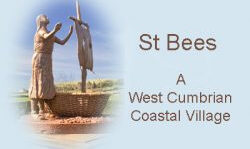Dragon Stone - Plate 3
Cross Slab, Malew, Isle of Man
Second half of 10th Century

The cross slab at Malew is both the worst eroded and also the most crudely executed example, although it also shows the most direct Scandinavian influence in the Jellinge dragon on the reverse of the slab. Overall it is very similar to, and possibly a poor copy of the Jurby example. At the top a well executed figure with a kirtle and helmet, and his sword in his belt, stands with his thumb in his mouth. He holds a stick with two irregular rings on it, over a fire of three triangular shapes. Above is a simple geometric interlace that may have some bearing on the dead dragon motif seen in the Halton example.
This section is separated from the dragon slaying below by a broad band. This matches one on the other side of the cross shaft on which an elegant horse stands, being, along with this Sigurd, the best executed figures from all three slabs. Compared to this, the dragon slaying is crudely portrayed. The basic plan is the same as Jurby, although slightly compressed. The dragon has no decorative embellishments, save for some interlaced tendrils which serve only to confuse the identification, since the dragon’s head is very badly carved. Sigurd, with being squashed into the same shape as at Jurby, has lost his legs, helmet and one arm, while his sword has disintegrated into a irregular triangle.

Cross Slab, Malew, Isle of Man.
Reproduced from the Art of the Manx Crosses with permission from the Manx Museum
